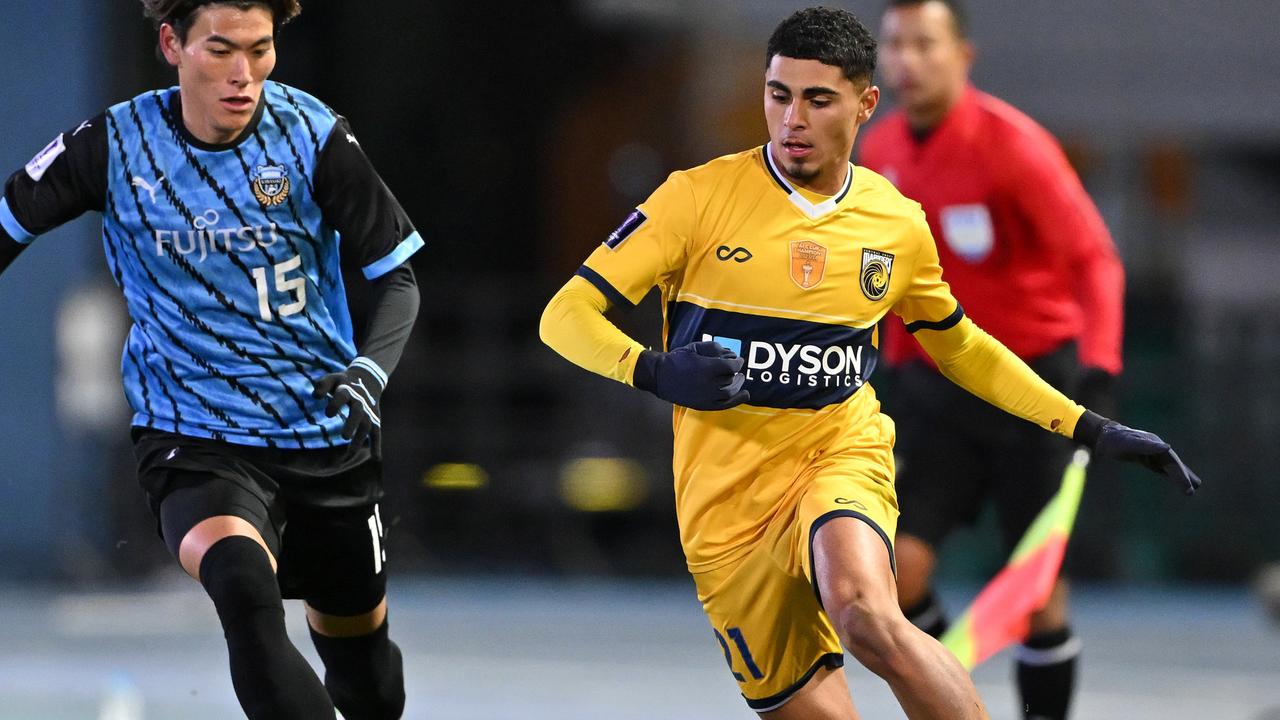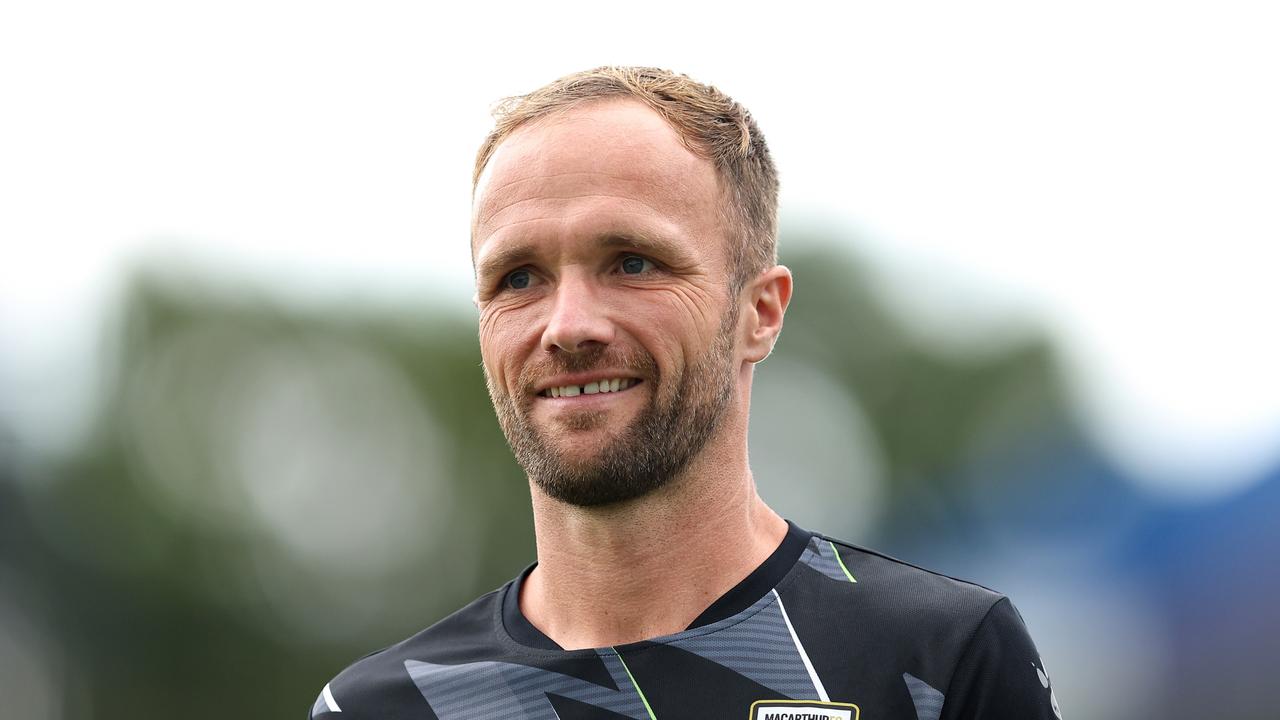Guus Hiddink shares his thoughts on Socceroos’ prospects in Qatar, Garang Kuol and more
Guus Hiddink has completed his stint with the Socceroos. He speaks to ADAM PEACOCK about what he witnessed in camp.
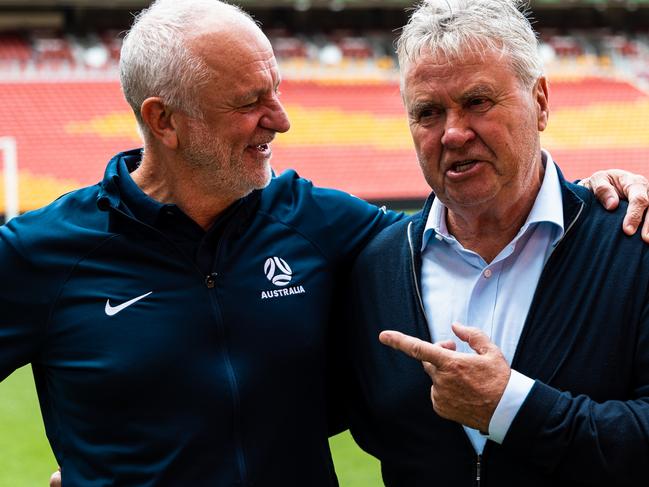
Football
Don't miss out on the headlines from Football. Followed categories will be added to My News.
Guus Hiddink’s role with the Socceroos last week was meant to be ceremonial.
Tell a few yarns, dish out some advice and see how his former apprentice, Graham Arnold, was getting on during two friendlies against New Zealand.
In Brisbane, Hiddink stayed seated on the bench for 90 minutes.
In Auckland, however, Hiddink was like an old musician who spotted a spare guitar.
“I couldn’t help myself!” Hiddink tells CODE Sports about why he started barking tactical instructions. “Of course I asked Arnie if it’s ok, he is the boss, but I see some things, especially with the defensive actions.
“I enjoyed it all very much.”
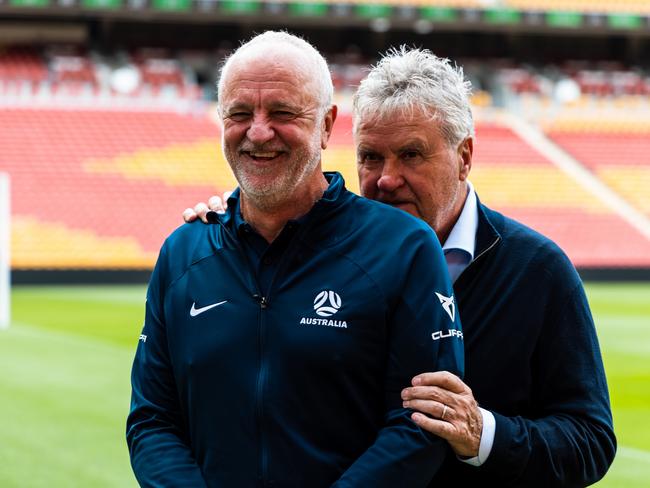
Hiddink is world renowned for his ability to notice every detail on and off the pitch, especially relevant for Australians in 2005 and 2006 when he took the Socceroos to the World Cup.
Players from that era recall Hiddink’s hawklike eyes on them at training and at team gatherings, trying to get a true indication of team harmony.
Who the true leaders were.
Who the troublemakers could be.
So, what did he observe in the current Socceroos squad?
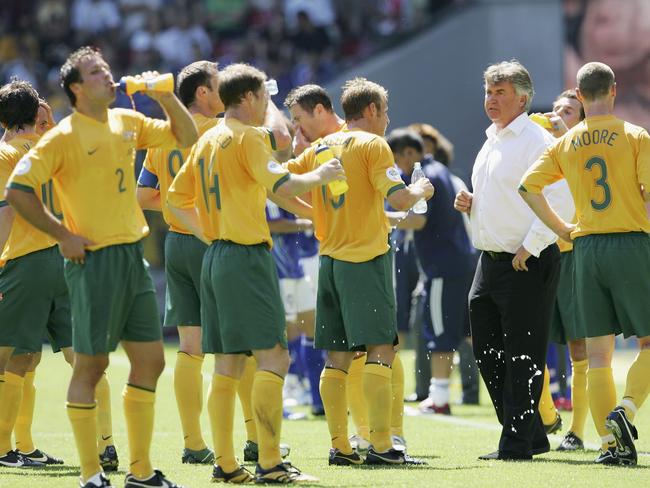
“I like to sit with my back to the wall and observe everything that is going on at meal times and in the meetings,” Hiddink says. “And when the meetings were over in this camp, I noticed the players stayed around and talked to each other. The group is very together. I liked this.”
The players loved having Hiddink in camp. They soaked in the insights regarding what it takes to play in the knockout stages of a World Cup as he did with Holland (1998), Korea (2002) and Australia (2006).
Throughout his career, Hiddink was notorious for issuing challenges to his players.
Against New Zealand last week, it was no different.
“Strong as a mouse!” and “Soft as a pudding!” were a couple of comments overheard. It was Hiddink to a tee. Back in 2005, he was ropeable at the performances of some big Socceroos stars in a game against the Solomon Islands.
“Are you sure these guys play in these big European leagues?” Hiddink would say loud enough for everyone on the bench to hear.
“No way, no way!” he’d continue, knowing full well that shortly after full time, those on the bench would tell those who played, “You shoulda heard what he said about you …”
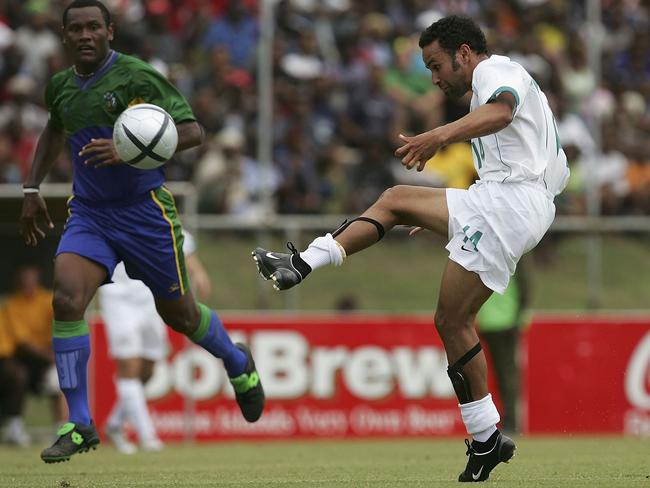
It was a challenge all in 2005 accepted.
To compete this time around, Hiddink backs up Graham Arnold’s call to his players to be in pristine shape by late November.
“They have to go to their clubs and be in top condition,” Hiddink says.
In Qatar there will be just one week of preparation time from November 14 – enough for just four full training sessions – leading into three group games within eight days. In air conditioned, climate controlled stadiums in the desert winter, there will be no excuse to play at anything less than breakneck speed.
Hiddink made it clear to the Socceroos that anything else will result in failure.
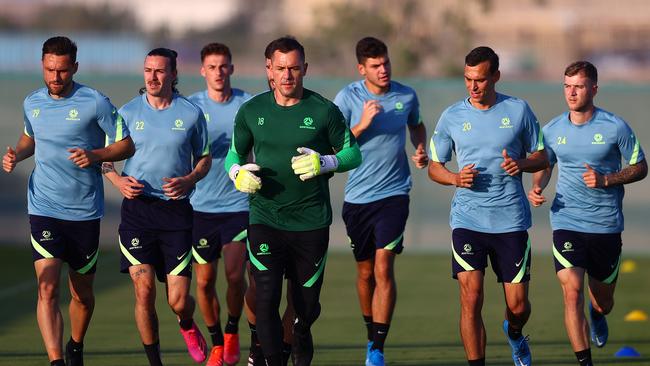
*****
Physicality is almost a dirty word in Australian football, for it was another Dutchman, former technical director Han Berger, who wanted to guide the game in this country away from what he labelled “fight ball”.
That mantra was implemented after the 2006 World Cup and the national curriculum to teach young players and coaches was focused on technical development with the ball, primarily in group settings.
It set off a philosophical debate that still rages today about how to best produce footballers.
Hiddink is not across all those details, so can only go on what he noticed in camp.
“The Kiwis were very strong, winning many duels and physical battles,” Hiddink observes.
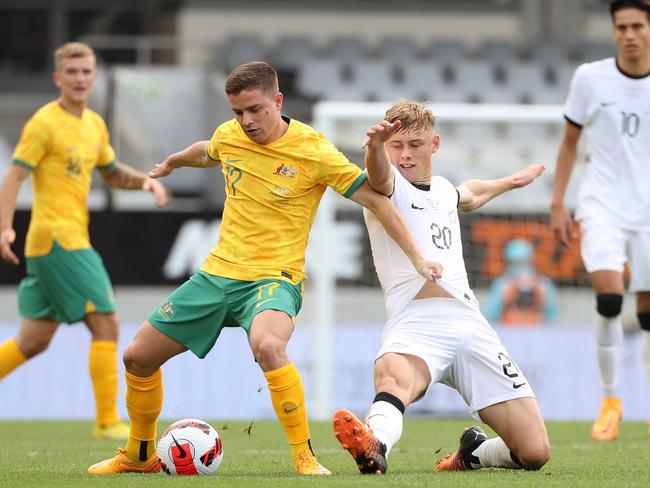
When told of the past 15 years of physicality being a taboo subject in developing young players, Hiddink says when it comes to the development years, there should be no debate.
“You should have both. You have to 50/50 work on the technical abilities as well as the physical side,” he says bluntly.
Hiddink is equally to the point when assessing Australia’s elite pathways.
When Hiddink left the Socceroos in 2006 to take up a role with Russia, his parting word of advice to then Football Australia chiefs Frank Lowy and John O’Neill was to pay close attention to the development systems.
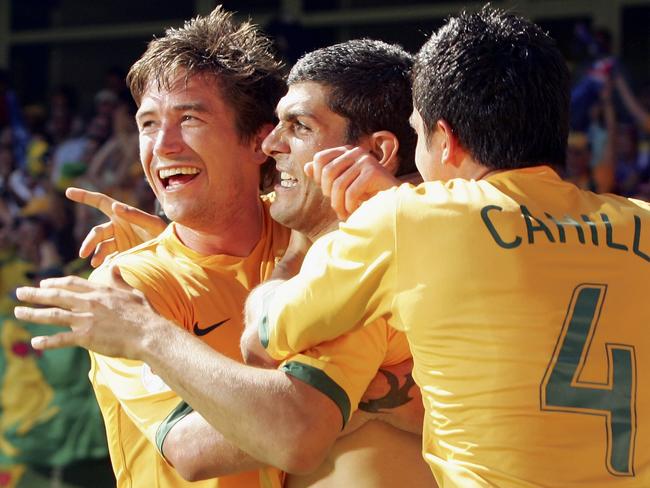
Seventeen years on, Hiddink is disappointed to learn not much has changed in the Australian development space, and can’t fathom the lack of football in comparison to any serious football nation.
“You see around the world young players getting 40 or 50 games a season, but here it is different. It is half a season,” Hiddink says in reference to the A-League Men’s being just 26 games (plus finals) long.
“You need more. I don’t know exactly the solution but the young players need attention. There needs to be help from the federation and the people in charge to make sure the development is as good as it can be.”
One player who grabbed some headlines in the second game against New Zealand was debutant Garang Kuol.
The 18-year-old caused some havoc against tired legs in Auckland. Hiddink leaves the question of Kuol’s inclusion in the World Cup squad to others, but believes the youngster has a long way to go to reach the top.
“He has talent, but we shouldn’t be getting too excited just yet because he has a lot to improve on,” Hiddink says. “His physicality is not there yet, and some of the things in his technique. He needs work, and to be in the right environment, to keep pushing and keep developing the right way.”
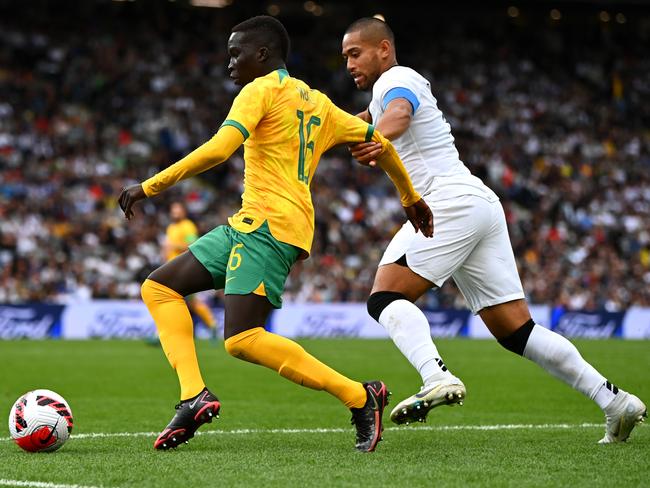
*****
Hiddink’s Australian reference points all stem from his short time in charge of the Socceroos, when he guided a group of men at the peak of their careers to do something no Australian men’s team had done before, or since – advance to the knockout stages of the World Cup.
Hiddink believes it will be a huge achievement for this group of Socceroos to do it again, given how young the profile of the team is, with many exposed to the highest quality international competition for the first time at last year’s Tokyo Olympics.
“Whatever happens at this World Cup, it won’t be the end, because these players from the Olympics will be there, and hopefully better in the future,” Hiddink says.
Hiddink’s 2006 team had 13 of the 23 players in clubs from top European leagues.
By contrast, the Socceroos camp last week had three of 30 players at that level.
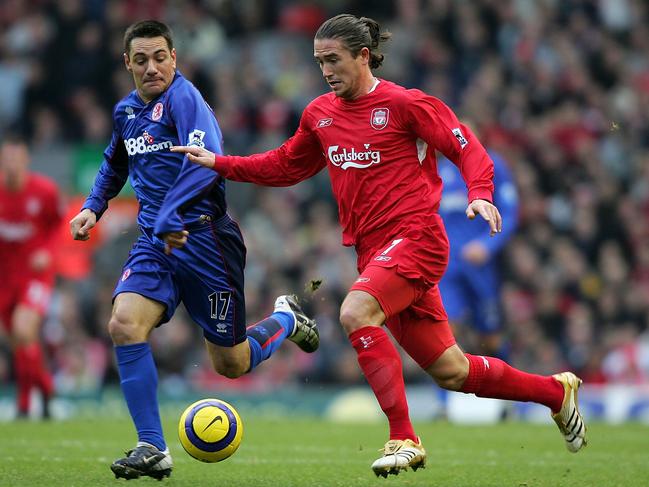
Hiddink doesn’t dance around what faces them in a group made up of France, Denmark and Tunisia.
“It’s a tough group,” Hiddink says, adding with a hint of mischief that France, Australia’s first opponent on November 22, could be messed with given the bizarre recent reports surrounding Paul Pogba, his brother and witchcraft spells cast on star player Kylian Mbappe.
“Maybe you can, as the old saying does, throw some sand in the gears!”
Hiddink isn’t in the business of prediction and opted against providing a definitive answer as to whether he thinks the Socceroos will progress. He did, though, lean on his base level belief when it comes to competing in rarefied company.
“They will need to be in the faces of the opponent, and then go from there,” he says. “It will take a lot of work and concentration.”
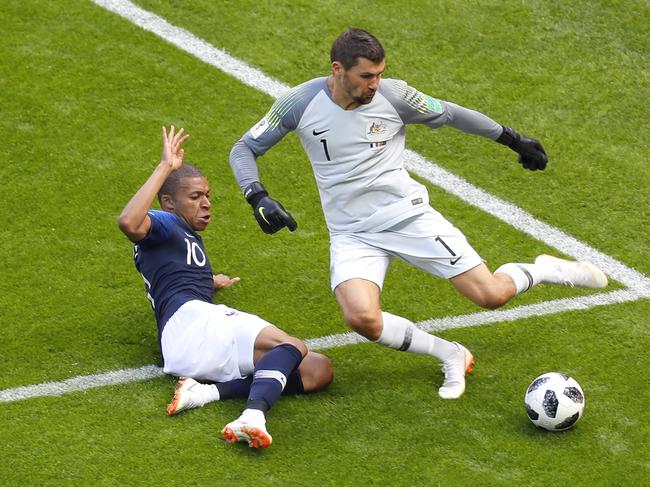
*****
As for his protégé, Arnold, Hiddink sounds more like a proud uncle to see him in charge.
“He is very committed, sometimes a bit too much!” he says. “I have to tell him now you just let them go and stand back a bit in training, but he only does that because he wants so much for the group.
“But you can see he is very together, his tactical instruction is good and with the players and there is a nice atmosphere in the group.
“I am very proud of him and we stay in touch all the time.”
The last week has been special, catching up on old times but, perhaps more importantly, providing Arnold with a refresher on tiny little elements that could prove vital at the World Cup.
For the event itself, Hiddink will view it from one of his two European bases in either France or Holland. The lines of communication with Arnold will stay open, and as always, eyes will be switched on for the little details.
“I will be watching,” Hiddink says, “and wishing them all success.”
Originally published as Guus Hiddink shares his thoughts on Socceroos’ prospects in Qatar, Garang Kuol and more


